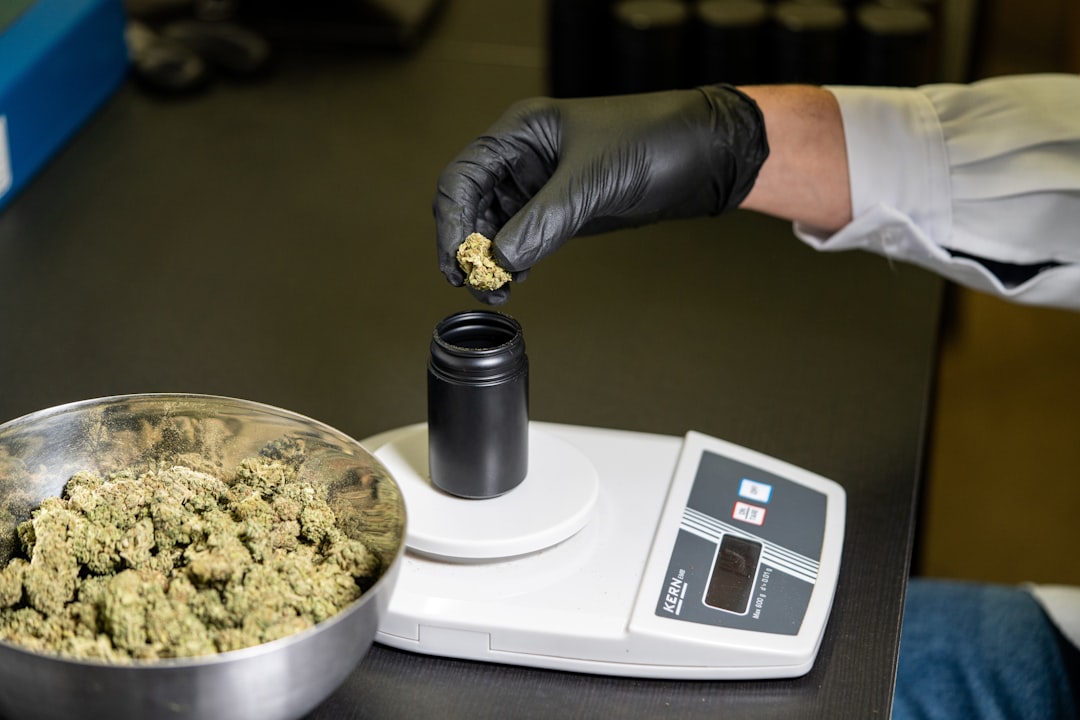

Engage prospects with a scan and streamline customer engagement with FREE QR code marketing tools by Sona – no strings attached!
Create a Free QR CodeFree consultation

No commitment

Engage prospects with a scan and streamline customer engagement with FREE QR code marketing tools by Sona – no strings attached!
Create a Free QR CodeFree consultation

No commitment
The rapid digitization of business processes has put QR codes at the forefront of connecting offline and online experiences, especially for medical marijuana consulting services navigating sensitive regulatory frameworks, including evolving QR compliance requirements. While QR codes offer new channels for engagement, many consultants still grapple with challenges such as missed opportunities to capture real-time client feedback, difficulty surfacing engagement signals for churn prevention, and ensuring consistent, compliant communication across physical and digital materials.
Medical marijuana consulting firms today manage growing volumes of compliance requirements, dynamic marketing needs, and ever-increasing expectations for rapid, actionable data. Traditional manual feedback collection, outdated segmentation, and a lack of visibility into stakeholder engagement often result in missed business growth opportunities, compliance risks, and limited ability to personalize outreach. Incorporating QR codes in marketing can help firms address these pain points by enabling richer, more immediate data capture and streamlined workflows, enhancing both compliance rigor and responsiveness.
This article explores how innovative consulting teams leverage QR codes to overcome visibility gaps, seamlessly collect feedback at offline touchpoints, and integrate engagement data for better account management. By making client interactions data-rich and instantly actionable, medical marijuana consulting leaders can turn operational pain points into platforms for strategic growth, robust compliance, and measurable client outcomes.

Gathering high-value, actionable client feedback remains a consistent hurdle for medical marijuana consultants, particularly when legacy processes like paper forms or post-session emails yield low response rates and limited segmentation. These outdated collection methods often lead to missed signals from high-potential prospects, slow compliance resolution, and untracked insights into client sentiment. QR-enabled flows reduce friction at the moment of relevance, which is typically right after an audit, training, or strategy session when recall is highest and response quality is strongest, using Google Forms QR codes to capture structured input quickly.
To meet rising regulatory and client demands, consulting firms are shifting to QR codes that make feedback seamless at every touchpoint. By integrating scanning moments into routine materials such as compliance checklists, SOP templates, and training certificates, consultants turn every interaction into a reliable source of structured data. That data can then be routed into CRMs and audit management systems, improving responsiveness and creating a self-reinforcing loop of measurement and optimization.
Moving to QR-driven feedback helps consulting teams accelerate critical compliance processes, catch high-value prospects who would otherwise go untracked, and provide a structure for proactive follow-up to reduce churn risk. Automated feedback routing and real-time analytics also minimize administrative overhead and enable consistent, data-driven iteration. Platforms like Sona QR’s product overview streamline this shift by generating dynamic codes, centralizing analytics, and syncing insights with CRM systems for attribution and forecasting.

Medical marijuana consulting faces a unique convergence of challenges: bridging offline advisory, compliance documentation, and sustained client engagement, all within a frequently shifting regulatory landscape and labeling standards. Often, critical client interactions are missed or not properly tracked, resulting in data silos, inconsistent follow-up, and underutilized insights that fuel business development and risk management. QR codes resolve this disconnect by turning physical touchpoints into digital gateways that are fast, traceable, and simple to deploy at scale.
QR codes bridge these gaps by linking every in-person moment to structured, digital data collection and instant feedback. Whether the interaction occurs during a site audit, a compliance training, or a board presentation, a quick scan provides a clean route from interest to action, and from action to analysis. This is particularly powerful in a sector where accuracy, documentation, and timeliness directly influence licensure standing and revenue continuity.
With QR codes strategically integrated across stakeholder journeys, consulting firms create a consistent, always-on feedback mechanism. The result is better compliance documentation, stronger account intelligence, and personalized engagement that aligns with the regulatory and operational realities of the cannabis ecosystem.

Consultants frequently encounter fragmented workflows when trying to capture multi-channel engagement or ensure that clients receive targeted, relevant updates about compliance or service changes. One-size-fits-all feedback mechanisms often produce incomplete data and miss intent signals tied to specific roles, such as compliance officers versus retail managers. QR codes provide modular formats that align with each scenario, improving precision and accountability.
By using different QR types for different tasks, firms can guide stakeholders to the right destination every time, while logging context for downstream analytics. Centralizing code creation and management in a single platform maintains consistency, allows faster updates, and avoids conflicting or outdated links across distributed teams.
By consolidating these QR formats into a single management platform like Sona QR, firms replace static, disconnected processes with an adaptive system. Each scan becomes a data-rich interaction mapped to real business needs, from compliance proof to expansion opportunities.
Untapped growth potential often hides in offline engagements: training handouts distributed without follow-up, audit visits where valuable intent signals go unrecorded, or conferences where handshakes do not translate into segmented leads. These analog gaps can stall pipeline momentum, obscure risks, and limit the personalization that builds long-term client value.
Deploying QR codes at critical touchpoints transforms passive materials into active engagement channels. When placed thoughtfully and paired with clear calls to action, QR codes capture intent at the moment of motivation and immediately route it to your systems. This is where consultancies can unlock measurable gains in response rates, velocity, and insight quality.
Strategic QR code deployment boosts feedback and response rates while creating a unified data trail. This equips consulting leaders to spot business development opportunities earlier, strengthen compliance posture, and nurture relationships based on observed engagement rather than assumptions. For broader industry perspectives, see QR codes in cannabis.

Insufficient or incomplete account-level feedback has long impeded consulting teams from surfacing timely risk flags, demonstrating compliance, or identifying new business needs within client organizations. Purpose-built QR experiences mapped to specific services or touchpoints convert every scan into structured signals for action.
As your practice grows, standardizing these use cases produces comparable metrics across clients and regions. This supports forecasting, resourcing, and continuous improvement while giving clients a consistent, professional experience from the first scan to the last.
These use cases strengthen your compliance narrative while improving the ability to personalize service delivery. Over time, the data becomes a strategic asset that guides investment in new offerings and markets.
A persistent pain point for consulting organizations is incomplete tracking of leads and client engagement, which undermines segmentation and relevance. Every QR scan, whether from a compliance packet, event presentation, or feedback survey, offers context that can power sharper retargeting, including new programmatic opportunities. By tagging scans by use case, location, and timing, your team can create high-resolution audience segments without guesswork.
Treat each code as a purpose-built entry point to a specific journey stage. This approach enables tailored content, precise timing, and coordinated sales involvement. It also enhances attribution by tying offline moments to measurable downstream actions. For tactics, see Sona’s Playbook titled Intent-Driven Retargeting.
These insights enrich CRM profiles and allow consulting teams to deliver outreach that matches a stakeholder’s current needs. Integrations with Sona QR simplify the sync of scan attributes into platforms like HubSpot, Salesforce, and ad networks, enabling automated nurture sequences and custom audiences driven by real behavior.
Fragmented campaigns that fail to sync offline and online data lead to wasted spend and uneven client experiences. Medical marijuana consulting firms gain an edge by using QR codes to unify touchpoints and maintain messaging alignment across channels, from printed SOP binders to webinar screens and trade show booths.
A connected approach treats every QR as both a conversion path and a data source. When codes are consistently branded, clearly labeled, and properly tagged, your team can orchestrate progress from awareness to consultation with less friction and better reporting. This is the foundation for predictable growth and repeatable excellence.
By managing QR programs in a centralized platform such as Sona QR, teams maintain consistent branding, collect comparable metrics, and sync scan data with CRM and analytics tools. This converts QR activity into a performance lever across the entire marketing mix.
Bringing a QR initiative from idea to impact requires thoughtful design, disciplined testing, and operational follow-through. The following steps provide a repeatable framework for planning, deploying, and optimizing QR code campaigns across your consulting practice.
Use this checklist as a playbook for your next initiative: select the most relevant options for your goal, confirm your integrations, and iterate quickly based on what the data shows.
Clarify a single business outcome for the campaign so design and measurement stay focused. For instance, you might target higher post-training survey completion, faster compliance verification after audits, or attribution for prospects engaging with print collateral.
Match the code type to the expected lifecycle of the content. Regulatory material and service pages often change, while foundational intake forms change less frequently.
Clear, accessible design drives scan rates. Testing across environments ensures a consistent experience and eliminates friction that can suppress participation.
Roll out the campaign where it can capture the most value. Align placements with how your audience moves through their day and the materials they already use.
Real-time visibility is essential for continuous improvement. Use a platform that consolidates reporting and supports agile iteration. For modeling impact, see Sona’s blog post titled Single vs Multi-Touch Attribution Models.
Lack of attribution and incomplete engagement visibility make it difficult for consulting firms to connect feedback programs or educational campaigns to revenue and compliance outcomes. Advanced QR tracking bridges this gap by linking scans to personas, content, and subsequent actions. This level of insight elevates QR from a convenience tactic to a core performance channel.
With proper tagging and integrations, your team can trace a path from a printed audit packet to a scheduled consultation, and from a training certificate to a paid education package. Beyond sales, these analytics quantify compliance value by documenting participation, attestations, and remediation progress. Sona is an AI-powered marketing platform that turns first-party data into revenue through automated attribution, data activation, and identity resolution—learn more at Sona.
Sona QR centralizes scan tracking, while Sona.com extends measurement into identity resolution and multi-touch attribution. Together they capture device, location, and timing data, sync with CRM platforms, and connect scans to downstream outcomes. This turns physical engagement into a quantifiable contributor to growth and compliance excellence.
Successful QR programs evolve with usage data, regulatory changes, and client expectations. Small refinements in placement, messaging, and automation can yield outsized gains, especially when scaled across trainings, audits, and events.
Prioritize tips that match your most common media and workflows. For many consultancies, that means training materials, audit documentation, and conference assets. Build a cadence for testing and iteration so improvements compound over time.
Start creating QR codes for free. The platform supports brand-safe design, dynamic editing, analytics, and integrations that make scaling simple and effective.

Creative QR applications can accelerate adoption and reveal what works for your audience. The following scenarios illustrate how consultancies convert analog moments into digital actions that strengthen both outcomes and relationships.
These strategies address common operational headaches like outdated account data and missed upsell cues. They also model a responsive, transparent culture that both clients and regulators value, since feedback and documentation are fast, consistent, and easy to audit.
As with any channel, QR code impact depends on execution quality. Clear design, context-aware placement, and disciplined measurement determine whether scans turn into meaningful actions or fade into background noise. Avoiding common missteps shortens the learning curve and accelerates returns.
Pair these tips with a quarterly audit of code inventory, destinations, and analytics. Retire underperforming assets, refresh stale content, and reinforce what the data shows people want.
Against the backdrop of heightened regulatory scrutiny, shifting client expectations, and the ongoing struggle to capture and act on offline engagement signals, QR codes offer medical marijuana consulting services a bridge from legacy pain points to dynamic, data-driven practices. Each scan becomes a proactive opportunity to fill feedback gaps, enrich account profiles, and close the loop on compliance and business development initiatives.
Consulting organizations that embed QR strategies into their operations are better positioned to attribute value to each client interaction, demonstrate regulatory diligence, and kickstart precise, relevant follow-up. No longer reliant on generic or disconnected data, consultants can unlock upsell opportunities, forestall churn, and support risk-managed service delivery, building a responsive and resilient business model in a fast-evolving sector.
By building QR-powered feedback and compliance flows into the heart of consulting engagements, medical marijuana consultants ensure no stakeholder or business opportunity is lost to anonymity or incomplete tracking. The result is measurable growth, improved client experiences, and a culture of continual learning and adaptation, anchored by technology that works with, rather than around, industry realities.
QR codes have revolutionized medical marijuana consulting services by transforming client feedback collection into a seamless, insightful process. By integrating QR codes, consultants can effortlessly gather real-time feedback, enhance client trust, and tailor recommendations with greater precision. Imagine instantly knowing which consultation approaches resonate most and swiftly adapting your services to meet evolving client needs.
With Sona QR, you gain the power to create dynamic, trackable QR codes that can be updated anytime without reprinting, ensuring your feedback campaigns stay fresh and effective. Every scan provides actionable data that connects directly to improved client satisfaction and retention, turning each interaction into a valuable opportunity for growth.
Start for free with Sona QR today and take the first step toward smarter, data-driven consulting that elevates your medical marijuana practice to new heights.
Medical marijuana consulting firms provide compliance management, regulatory training, audit support, client feedback collection, marketing strategy, and business expansion assistance within the evolving cannabis regulatory environment.
Consulting services help by managing compliance documentation, conducting audits, providing training, capturing real-time feedback through QR codes, and ensuring communication and materials stay accurate and up to date with regulatory changes.
QR codes enable seamless offline-to-online engagement, real-time data capture, improved compliance tracking, faster feedback collection, dynamic content updates without reprinting, and enhanced client interaction analytics.
Consultants use QR codes to capture detailed client feedback, identify upsell opportunities, segment audiences for targeted marketing, improve client retention, and provide data-driven insights that support strategic growth and personalized service.
Key considerations include the firm’s ability to manage compliance rigorously, leverage innovative technologies like QR codes for data capture, provide actionable analytics, integrate with CRM systems, and offer tailored solutions aligned with regulatory and business needs.
Use Sona QR's trackable codes to improve customer acquisition and engagement today.
Create Your FREE Trackable QR Code in SecondsJoin results-focused teams combining Sona Platform automation with advanced Google Ads strategies to scale lead generation

Connect your existing CRM

Free Account Enrichment

No setup fees
No commitment required

Free consultation

Get a custom Google Ads roadmap for your business






Launch campaigns that generate qualified leads in 30 days or less.
